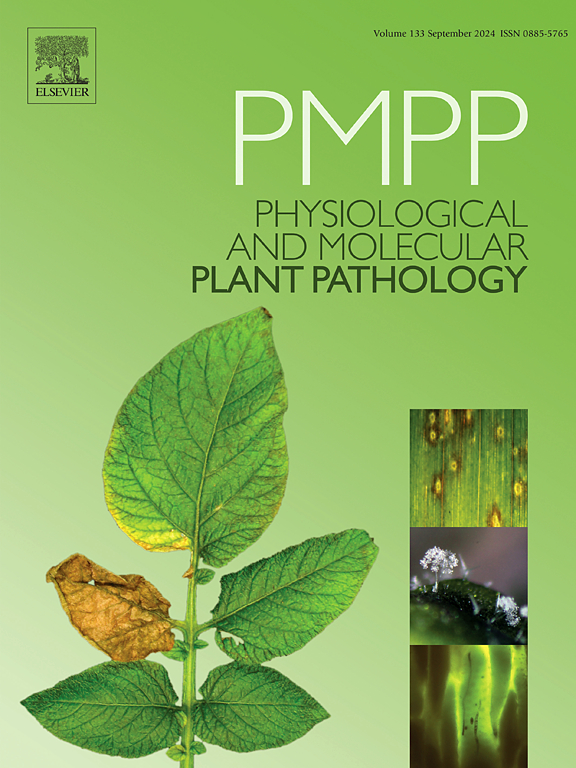kiye Bursa省和Isparta省(Eğirdir)核桃苗圃病原菌种类,首次报道了核桃上的vexans、litorale、phhanidermatum和Globisporangium ultimum
IF 2.8
3区 农林科学
Q2 PLANT SCIENCES
引用次数: 0
摘要
本文章由计算机程序翻译,如有差异,请以英文原文为准。
Pathogenic Oomycota species in walnut nurseries of Bursa and Isparta(Eğirdir) provinces in Türkiye, with a first report of Phytopythium vexans, Phytopythium litorale, Pythium aphanidermatum and Globisporangium ultimum on walnut
Türkiye holds a significant position in global walnut production. According to data from the 2023 production year, the country ranks sixth worldwide, producing approximately 67.000 metric tons of walnuts. However, the expansion of walnut cultivation has also introduced new challenges, particularly root rot diseases that threaten the health and productivity of walnut orchards. One of the most critical diseases affecting walnut crops globally is walnut dieback. This study aimed to characterize the symptoms of walnut dieback and identify the associated causal agents in walnut nurseries located in the Bursa and Isparta (Eğirdir) provinces of Türkiye. Field surveys were conducted between 2019 and 2022 in nearly all commercial walnut nurseries in Bursa, as well as in a major nursery in Isparta (Eğirdir). Plants exhibiting symptoms such as general growth suppression, dieback, leaf yellowing and discoloration, reduced leaf count, and desiccation were examined, focusing on their roots and root collars. In vivo assays and molecular analyses identified several oomycete species, including Phytophthora, Phytopythium, Pythium, and Globisporangium, as the causal agents of the disease. The coexistence of multiple pathogenic oomycetes raises concerns regarding orchard health and the potential transmission of these pathogens to other fruit crops in the region. These findings will assist growers in adopting improved cultural practices and implementing effective management strategies to ensure the long-term sustainability of walnut production in Türkiye.
求助全文
通过发布文献求助,成功后即可免费获取论文全文。
去求助
来源期刊
CiteScore
4.30
自引率
7.40%
发文量
130
审稿时长
38 days
期刊介绍:
Physiological and Molecular Plant Pathology provides an International forum for original research papers, reviews, and commentaries on all aspects of the molecular biology, biochemistry, physiology, histology and cytology, genetics and evolution of plant-microbe interactions.
Papers on all kinds of infective pathogen, including viruses, prokaryotes, fungi, and nematodes, as well as mutualistic organisms such as Rhizobium and mycorrhyzal fungi, are acceptable as long as they have a bearing on the interaction between pathogen and plant.

 求助内容:
求助内容: 应助结果提醒方式:
应助结果提醒方式:


